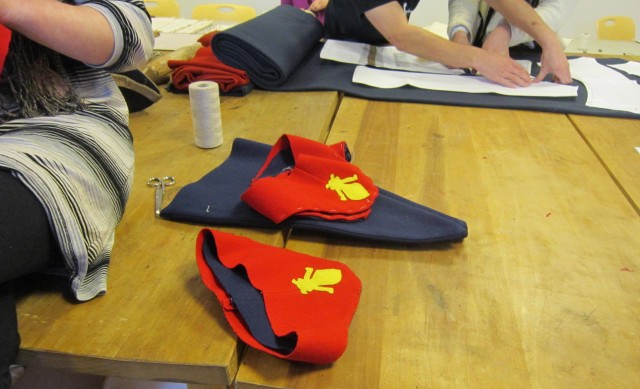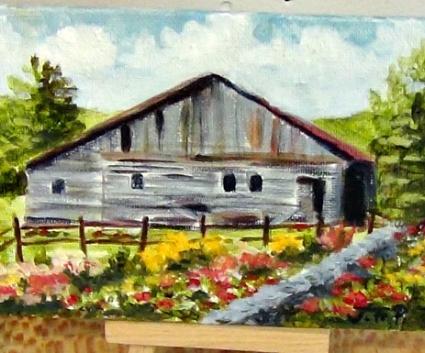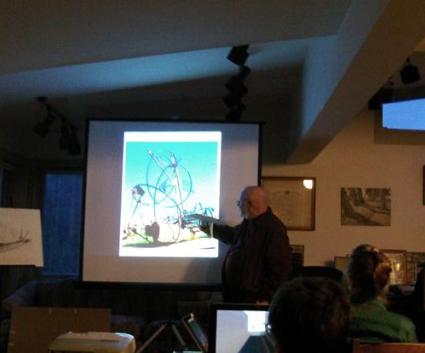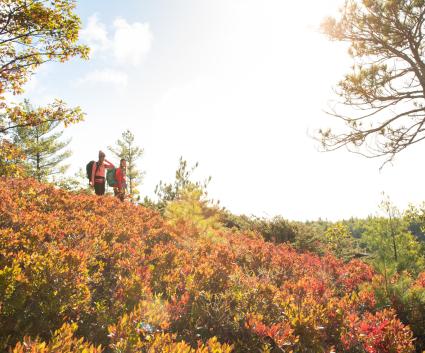Here in the Adirondacks our mailboxes are beginning to bulge with daily arrivals of seed and plant catalogs. If we have yet to begin thinking about gardening, these daily arrivals ignite our thoughts of growing flowers, vegetables and fruits. Of course these seed purveyors are well aware it would require a jackhammer to turn any soil in our region right now, but they fully understand the whole process.
I love receiving these wish-books. As I gaze out at my black and white landscape it’s uplifting to envision it alive and in color. Gardening is an Adirondack tradition after all. Practically everyone in the Lake Champlain Region gardens to some degree: a few flowers, fruits, vegetables. Long before we break ground we undergo the preliminary steps of planning and preparation. On my miniscule plot, I may consider a new variety of zinnia and perhaps a different type of tomato. My garden’s productivity is really not essential, other than to my ego. I am fortunate to be able to frequent the many farmers’ markets and the CSA growers throughout our region for my produce. Though we do have options today, growing edibles was absolutely necessary for our ancestors; crucial for survival. There is no better place to gain an understanding of this than at Fort Ticonderoga.
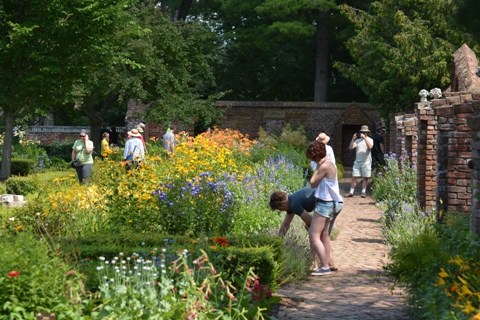
Under Cover Gardens
I ventured to the Fort on a bright, sunny January afternoon. There I connected with Cameron Green, Fort Ticonderoga’s Assistant Director of Interpretation. Cameron oversees all the planning, preparation and growing on the Fort’s grounds, specifically at Le Jardin de Roi, the King’s Garden. I suspected garden activities to be rather quiet this time of year, but I was in for a surprise.
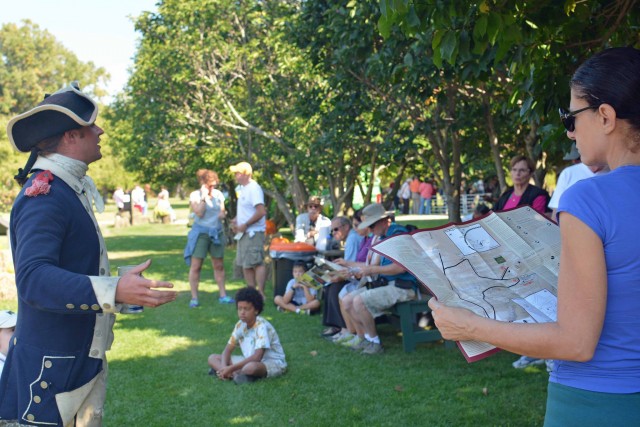
Aside from having a perfectly appropriate last name for his vocation, I discovered Cameron brings more than the fruits, vegetables, and flowers to Fort Ticonderoga’s table. He holds years of education in horticulture, history, and has had hands-on experience as a grower. I was very fortunate to be able to walk the grounds of the garden with him, despite the time of year. Though the grounds lay quiet and snow covered, through his eyes it sprang to life and vivid color. He shared what is happening now, what we can anticipate during 2015, and future plans for these gardens. I want to share some of this.
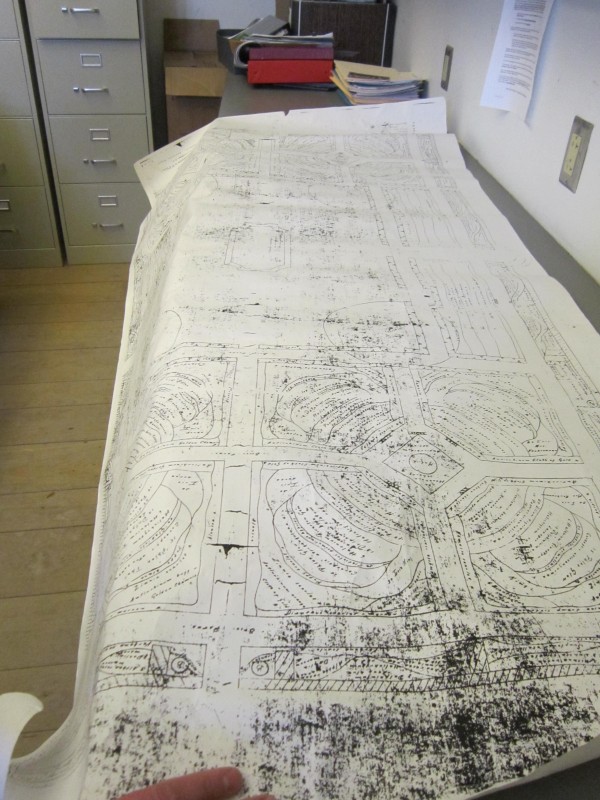
Garden Collection
For starters, understand that the King’s Garden is not just one garden, but rather an entire collection. Perhaps the central focus is the brick-walled Colonial Revival garden. Symmetrical and more formal, this garden was designed by Marian Cruger Coffin in the 1920s to complement the pavilion, the adjacent residence of the Fort’s preservationist owners, the Pells. Ms. Coffin was a landscape architect, quite unusual as this was a male-dominated field during that era. She was also a watercolorist. She applied her artistic vision and understanding of color to make this large, formal garden appear even more expansive. Cameron showed me her original garden design plans, a blueprint of sorts. I was amazed at the amount of detail and intricate design. Thanks to the Fort’s attention to authenticity we get to enjoy her work every summer season. Original heirloom variety flowers and shrubs are carefully selected, and surrounding shade-producing trees prudently pruned or removed. I have visited this garden during the height of the season. It is magical, absolutely enchanting and difficult to leave.
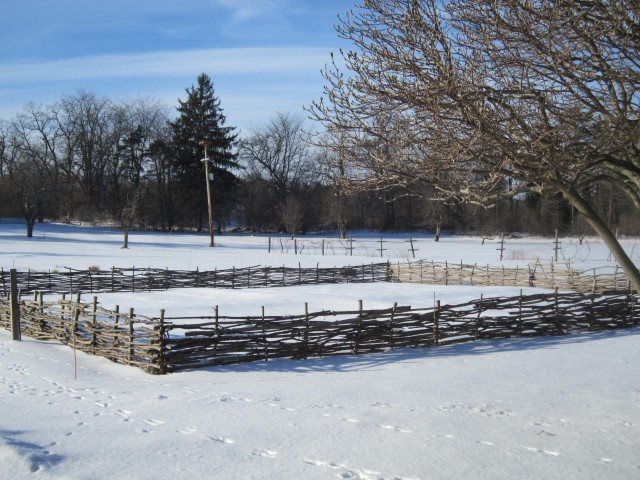
Feeding the Troops
Outside of the brick walls continue additional gardens of all varieties and more are in the works. There is the children’s Discovery Garden, an herb garden, and, one of the most essential, the Soldier’s or Garrison Garden. This garden is responsible for feeding “the troops”, the staff and soldiers occupying the Fort every year. Keep in mind, every year is a new experience at the Fort. The “lens” changes along with everything else. Last year we looked through the eyes and experiences of American troops occupying the Fort in 1776. This year we revert to the year 1756 when the French occupied Fort Ticonderoga, or as it was called, Fort Carillon. This means the contents of Garrison Garden changes too. Vegetables that were grown for the troops in 1776 may, or may not, have been grown during 1756. In fact, Cameron advised me there will certainly be no potatoes. At that time the French considered potatoes hogs’ feed! (What!? Hard to believe any ancestor of mine would shun potatoes. This obviously had to be pre-au gratin). There will be varieties of cabbage grown however.

Research, Planning and Preparation
I was impressed by the diligent research that goes into these annual garden vegetable selections just to keep every planted choice in line with the year of focus. On his computer screen, Cameron showed me a scanned handwritten document, a list of the seed plans for the garden dating from 1756! I was not aware records like this even existed. But, don’t think this makes his annual preparations any easier. For instance, unusual names for items/seeds of that era require considerable additional research. As I looked at the list I saw “orange seeds” had been written. Obviously oranges weren’t grown on the Fort grounds, so that mystery had to be unraveled. “History is never static,” he reminded me.
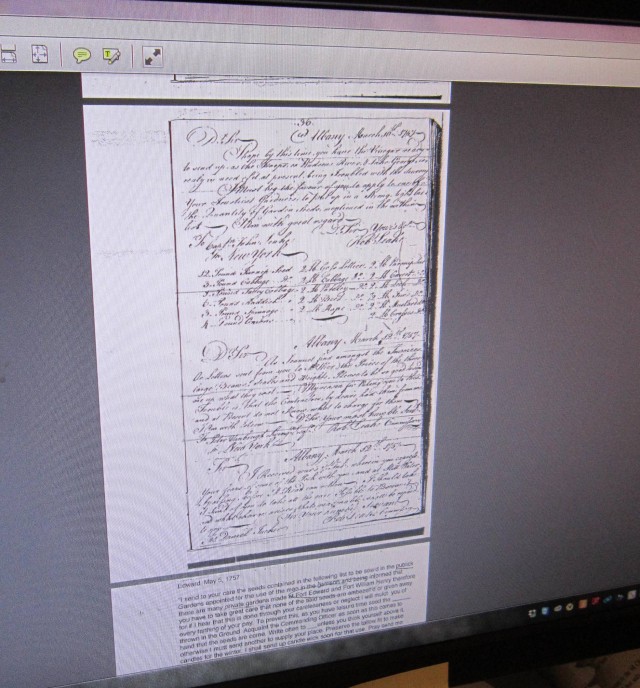
We walked around the Lord and Burnham style greenhouse on the King’s Garden grounds while he showed me recent repairs to this graceful structure. Though looking quite chilly and peaceful right now, in a few weeks it will be bustling with activity. Inside this structure many of the seedlings will be started for all the different gardens. But, there just isn’t adequate space in this one greenhouse to start everything, so some seed starting must be “farmed out.” However, every seed to be planted is at first carefully selected and ordered by the Fort. Then, all seed shipments arrive at the Fort first for scrutiny, cross checking and record keeping... volumes of record keeping.
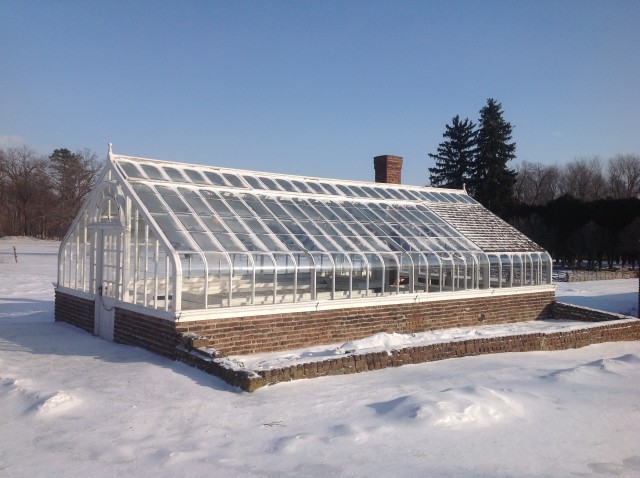
This year the Fort will be adding a 20th Century Garden to their vast collection. This garden will supply much of the produce used in creating the delicacies at the Fort’s Café. Here, we will find more modern varieties of vegetables than in the Garrison Garden. These updated varieties should more readily appeal to today’s palate. We will be able to see flower and vegetable varieties of the early 1900s, during the time the residents at the Pavilion were focusing their attention on gardening.
Future Plans
While on the King’s Garden grounds Cameron walked me over to the “Y.D.” house. Renovation plans are in the works for this structure too, though it may not happen this year. This building was originally built as a playhouse for children and may be the only playhouse in existence built in true Adirondack Style. This two story log structure, with wide roof overhangs and a covered balcony complete with branch railings, is a true Adirondack charmer. While certain children's activities may have been restricted in the Pavilion, or main residence, children could be themselves and let loose in the Y.D. house. Y.D. is short for Yes-Do. It faces the lake and is huge for any playhouse I have ever seen. I will be anxious to see it restored to its original self.
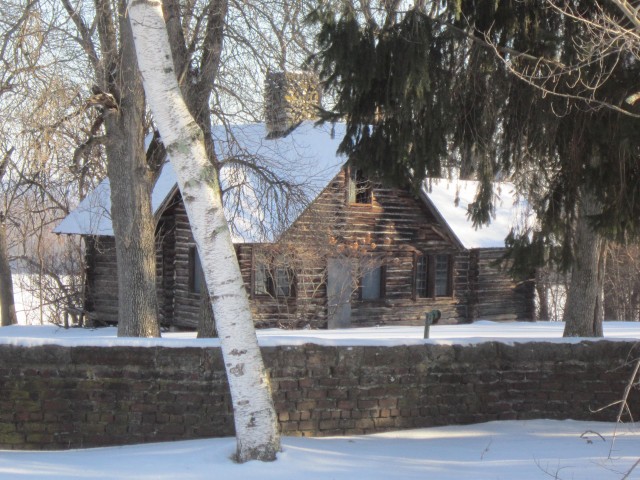
Exclusive Opportunity
Fort Ticonderoga acquired its nursery license this year. Visitors will be able to purchase a wide variety of heirloom plants and seeds for their own gardens. How exclusive! This should excite anyone with a growing passion. Produce will be available for purchase too. Imagine having your own garden contain flowers or vegetables laden with history; grown from plants and seeds extensively researched by the experts and raised in the very soil where our country was born. Or, think of the dinner conversation starter as you serve produce harvested from such historical ground. Those with that gardening passion should be aware that visitors are always invited to get hands-on involved in the gardens under the direction of Fort Interpretive Staff. Special programs and projects also allow opportunity to add other features to your own garden such as day lily and iris division times. Keep an eye on the calendar of events for what’s happening and plan on attending the Fourth Annual Garden & Landscape Symposium at Fort Ticonderoga on April 18th.
More Living History
Aside from the green, we will see other forms of life at the King’s Garden this year - chickens! In keeping with the theme and year of focus, the Fort will raise a variety of French Heritage Chicken called La Fleche. This particular type of chicken is quite rare. Originating from La Sarthe River Valley in France, this historic breed was once famous for its fine quality of meat. Cameron told me the Fort also has plans to acquire their own oxen. There is no end to the living history at Fort Ticonderoga.
As always, I regretted leaving the Fort that afternoon. Talking with Cameron made me aware that just because the gardens may be at rest, didn’t mean this wasn’t a busy time. Though I was captivated by hearing of all the Fort news, projects and plans, I had to let him get back to work. The hard work and preparation invested now results in the sensory feasts we will have later this year. I exited through the winter location of the historic trades’ shop where the 1756 clothing and shoes are being meticulously handcrafted. I provide you a glimpse of some of the colorful attire you will see around the Fort Ticonderoga grounds this year, but you really need to come see for yourself. With annually expanding programs, recreational and educational opportunities, plan for an extended visit. There is just too much to see and do. Like me, you won’t want to leave.
